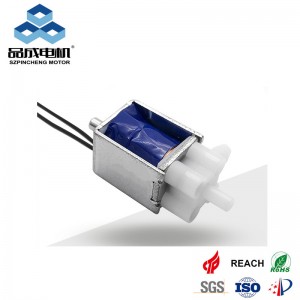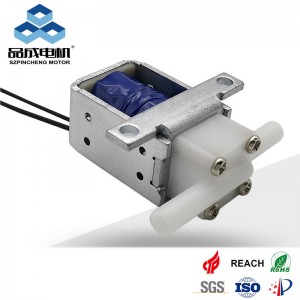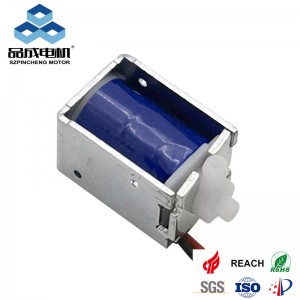Introduction
Miniature solenoid valves are essential in precision fluid control systems, from medical devices to industrial automation. Their performance, durability, and reliability heavily depend on material selection for key components: valve body, sealing elements, and solenoid coils. This article examines the best materials for these parts and their impact on valve functionality.
1. Valve Body Materials
The valve body must withstand pressure, corrosion, and mechanical stress. Common materials include:
A. Stainless Steel (303, 304, 316)
-
Pros: High corrosion resistance, durable, handles high pressures
-
Cons: More expensive than plastics
-
Best for: Chemical, medical, and food-grade applications
B. Brass (C36000)
-
Pros: Cost-effective, good machinability
-
Cons: Prone to dezincification in aggressive fluids
-
Best for: Air, water, and low-corrosion environments
C. Engineering Plastics (PPS, PEEK)
-
Pros: Lightweight, chemical-resistant, electrically insulating
-
Cons: Lower pressure tolerance than metals
-
Best for: Low-pressure, corrosive media (e.g., lab equipment)
2. Sealing Materials
Seals must prevent leaks while resisting wear and chemical attack. Key options:
A. Nitrile Rubber (NBR)
-
Pros: Good oil/fuel resistance, cost-effective
-
Cons: Degrades in ozone and strong acids
-
Best for: Hydraulic oils, air, and water
B. Fluorocarbon (Viton®/FKM)
-
Pros: Excellent chemical/heat resistance (-20°C to +200°C)
-
Cons: Expensive, poor low-temperature flexibility
-
Best for: Aggressive solvents, fuels, high-temp applications
C. PTFE (Teflon®)
-
Pros: Nearly chemically inert, low friction
-
Cons: Harder to seal, prone to cold flow
-
Best for: Ultra-pure or highly corrosive fluids
D. EPDM
-
Pros: Great for water/steam, ozone-resistant
-
Cons: Swells in petroleum-based fluids
-
Best for: Food processing, water systems
3. Solenoid Coil Materials
Coils generate the electromagnetic force to actuate the valve. Key considerations:
A. Copper Wire (Enameled/Magnet Wire)
-
Standard choice: High conductivity, cost-effective
-
Temperature limits: Class B (130°C) to Class H (180°C)
B. Coil Bobbin (Plastic vs. Metal)
-
Plastic (PBT, Nylon): Lightweight, electrically insulating
-
Metal (Aluminum): Better heat dissipation for high-duty cycles
C. Encapsulation (Epoxy vs. Overmolding)
-
Epoxy potting: Protects against moisture/vibration
-
Overmolded coils: More compact, better for washdown environments
4. Material Selection Guide by Application
| Application | Valve Body | Seal Material | Coil Considerations |
|---|---|---|---|
| Medical Devices | 316 Stainless | PTFE/FKM | IP67-rated, sterilizable |
| Automotive Fuel | Brass/Stainless | FKM | High-temp epoxy potting |
| Industrial Pneumatics | PPS/Nylon | NBR | Dust-proof overmolding |
| Chemical Dosing | 316 Stainless/PEEK | PTFE | Corrosion-resistant coil |
5. Case Study: Pinmotor’s High-Performance Solenoid Valve
Pincheng motor’s 12V Miniature Solenoid Valve uses:
-
Valve Body: 303 stainless steel (corrosion-resistant)
-
Seals: FKM for chemical resistance
-
Coil: Class H (180°C) copper wire with epoxy encapsulation
Result: Reliable operation in harsh environments with >1 million cycles.
Conclusion
Choosing the right materials for valve bodies, seals, and coils is critical for solenoid valve performance. Key takeaways:
-
Stainless steel/PEEK for corrosive/medical uses
-
FKM/PTFE seals for chemicals, NBR/EPDM for cost-effective solutions
-
High-temp coils with proper encapsulation for durability
Need a custom solenoid valve solution? Contact Pincheng motor for expert material selection and design support.
you like also all
Post time: Mar-31-2025




